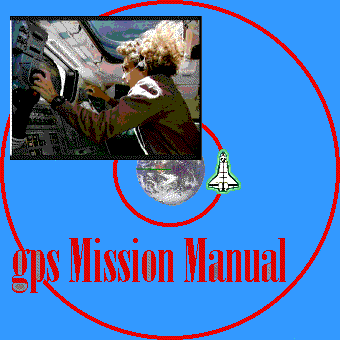
The GPS Operational Constellation consists of 24 satellites: 21 navigational SVs and 3 active spares orbit the earth in 12 hour orbits. These orbits repeat the same ground track (as the earth turns beneath them) once each day. The orbit altitude is such that the satellites repeat the same track and configuration over any point approximately each 24 hours (4 minutes earlier each day).
THE LAB
In this exercise you will be asked to review the physics of orbital motion to accomplish the mission outlined on the right. |
|
| 1. You, the shuttle commander, are in a low Earth orbit, 350 km above sea level. You are to fire a 200 kg GPS satellite module into a typical GPS orbit (20,200 km above the Earth's surface). | |
|
2. You are to fuel the GPS launcher engines with fuel to give the GPS module
a kinetic energy boost that will take the module to the new orbit, 20,200 km above the
Earth's surface.
The module will be fired tangentially to the present orbit. |
|
| 3. How much fuel energy (in joules) do you need for the required energy boost? | |
|
|
|
|---|---|
TRY IT ON YOUR OWN FIRST.Use the hints belowIF YOU NEED MORE HELP, FLIP THROUGH THE MANUAL BELOW. | |
|
1. Draw the initial and final orbits.
Draw the orbit that the GPS module has to follow if it is to leave the low orbit tangentially and reach the high orbit tangentially. |
|
|
2. Write down the expressions for the angular momentum of the module (1) immediately
after the energy boost and (2) as it reaches the high orbit.
How is the velocity immediately after the energy boost related to the velocity of the module as it reaches the higher orbit? |
|
| 3. How is the kinetic energy of the module as it reaches the higher orbit related to the kinetic energy of the module immediately after the boost and to the work that needs to be done against the gravity pull? | |
| 4. Calculate the kinetic energy that the module needs immediately after the boost if it is to complete the transfer as indicated. | |
| 5. Subtract the kinetic energy before the boost from the kinetic energy after the boost. | |
|
|
|

| ||
|---|---|---|
